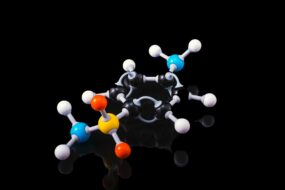- Home
- DRUGS
- Respiratory system
- Codeine

Codeine is an opium alkaloid qualitatively similar to and less potent than morphine. It is regarded as the standard antitussive drug, suppressing cough for about 6 hours. The aim is to control rather than eliminate cough; hence should be used only for dry, nonproductive cough or if the cough is unduly tiring, disturbs sleep, or is hazardous, i.e.: hernia, piles, or cardiac disease.
Mechanism of action.
- In the CNS, the drug raises the threshold of the cough center.
- It acts peripherally in the respiratory tract to reduce tussal impulses.
Clinical uses.
- Management of cough.
- Pain management.
Adverse effects.
- Constipation and drowsiness.
- Hypotension, tachycardia, and confusion
- Headache, Lightheadedness
- Malaise.
Drug interaction.
- Fentanyl increases the effects of codeine by pharmacodynamic synergism.
- Codeine increases the toxicity of rasagiline.
- Cimetidine increases the level and effect of codeine by affecting hepatic enzyme CYP2D6 metabolism.
Contraindication.
· Hypersensitivity to codeine.
· Significant respiratory depression.
· Children younger than 12 years.
· Acute or severe bronchial asthma.
· Gastrointestinal obstruction, including paralytic ileus.
- In asthmatics.
- Patients with diminished respiratory reserve.
Dosage.
- Dose: 10–30 mg; children 2–6 years 2.5–5 mg, 6–12 years.
- 5–10 mg, frequently used as syrup.
- CODEINE 15 mg tablets, 15 mg/5 ml linctus.












